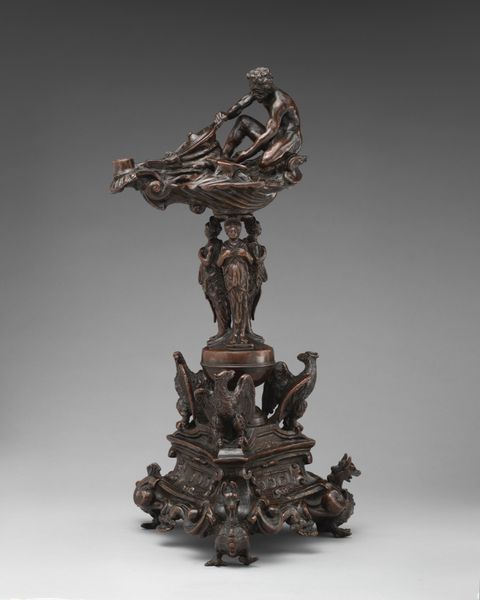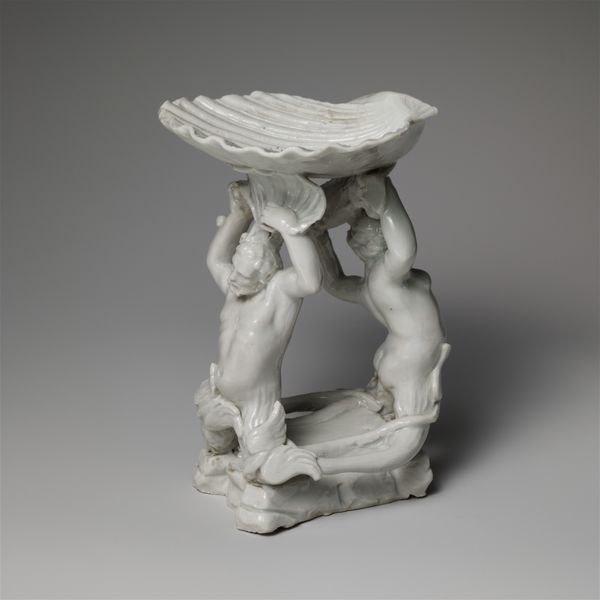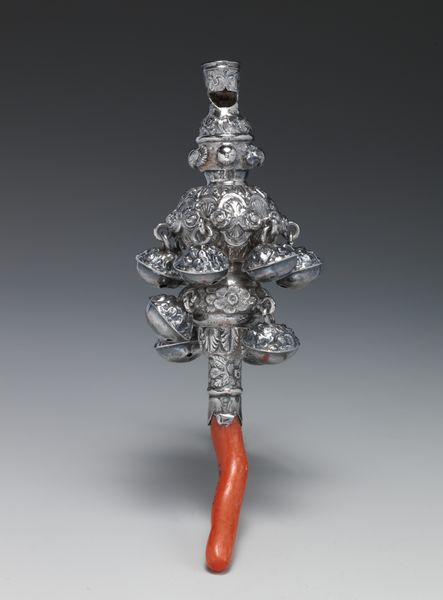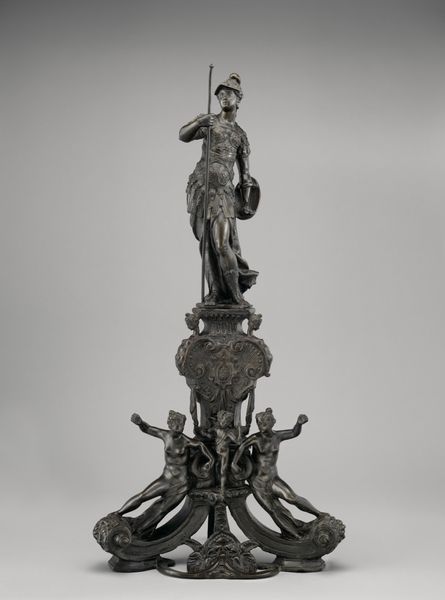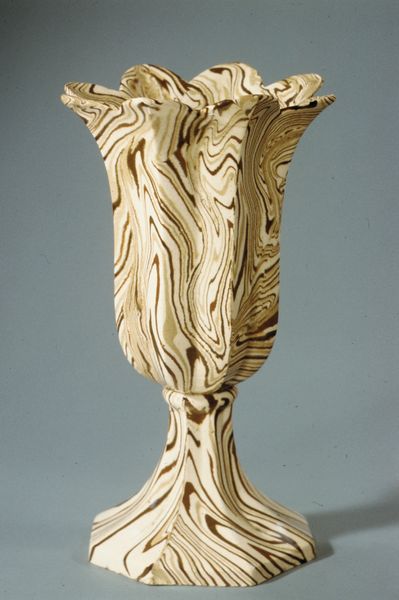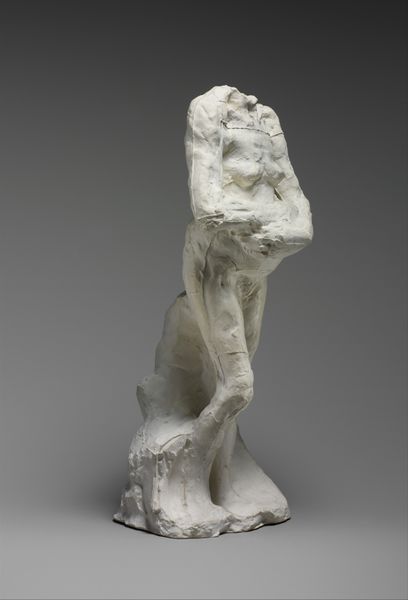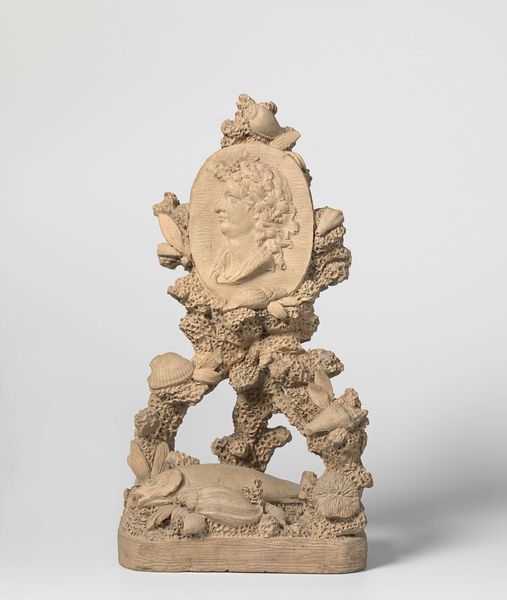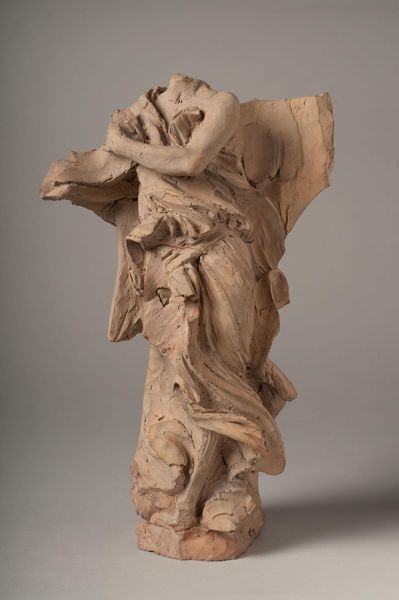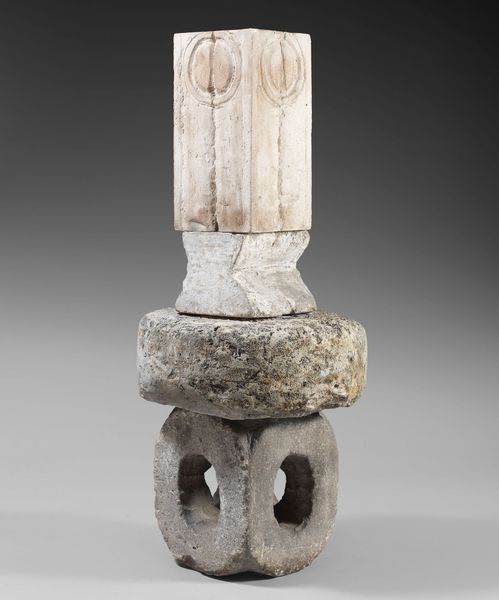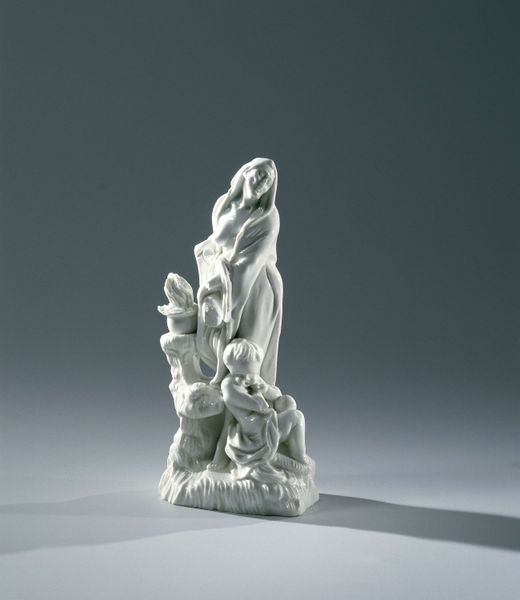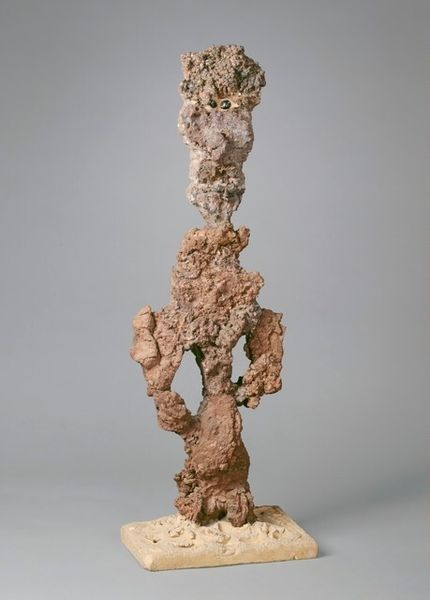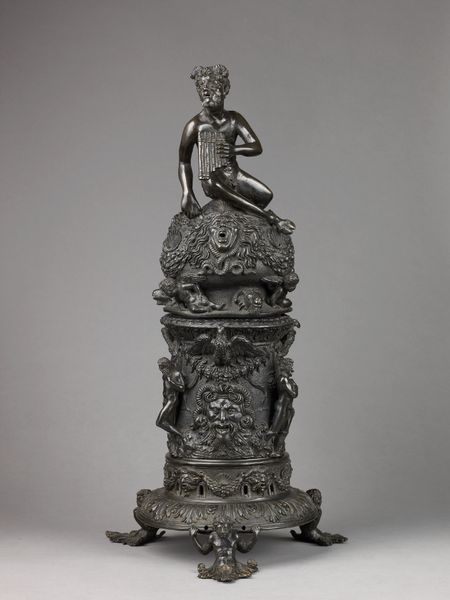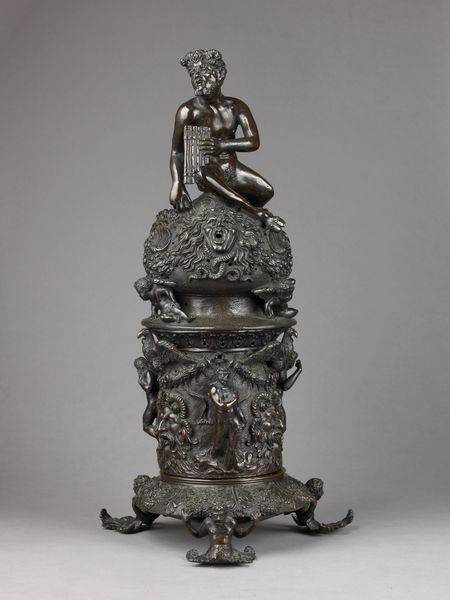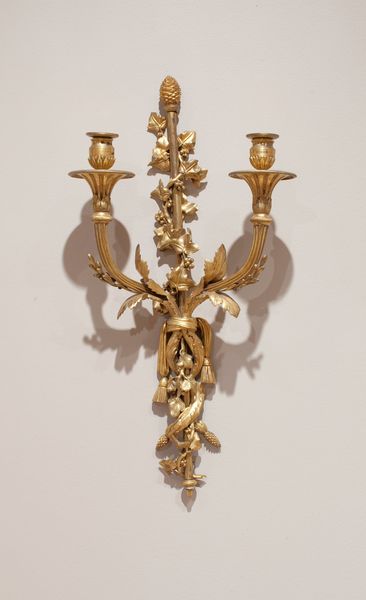
Dimensions: object: 522 x 407 x 127 mm
Copyright: © The estate of Jacques Lipchitz, courtesy, Marlborough Gallery, New York | CC-BY-NC-ND 4.0 DEED, Photo: Tate
Editor: This is Jacques Lipchitz’s plaster sketch for ‘Bellerophon Taming Pegasus.’ It’s powerful! All that struggle captured in this small sculpture; what statements do you think Lipchitz was trying to make with this piece? Curator: Lipchitz, grappling with the rise of fascism, frequently used mythological subjects to explore themes of power, control, and ultimately, resistance. Bellerophon's taming of Pegasus could be seen as a metaphor for the subjugation of freedom. How does the raw, almost violent texture of the plaster contribute to this interpretation? Editor: I see what you mean. The roughness definitely adds to the feeling of conflict and the difficulty of Bellerophon's task. Curator: Exactly. And consider the pedestal – a classical form supporting this turbulent scene. Does that contrast suggest anything about the supposed stability of tradition in the face of upheaval? Editor: Wow, I hadn't thought about that. I was too focused on the figures. Thanks for pointing that out! Curator: Of course. It is vital to not only consider the what, but also the how and why.
Comments
tate 6 months ago
⋮
http://www.tate.org.uk/art/artworks/lipchitz-sketch-for-bellerophon-taming-pegasus-t03480
Join the conversation
Join millions of artists and users on Artera today and experience the ultimate creative platform.
tate 6 months ago
⋮
For Lipchitz, the capture of the flying horse Pegasus by the Greek hero Bellerophon symbolised the control of nature by human intelligence. He selected the theme specifically for a sculpture at the Columbia University School of Law in New York. Bellerophon stands at the bottom of the composition, pulling down Pegasus's head and tying a rope around his neck. The final sculpture, set in place in 1977, is more than eleven metres high. Gallery label, August 2004

